We took a trip to Taiwan and China in June 2019. Like most of our trips, I began writing about it shortly after. However, I got distracted somehow and never gotten around to finish it. Over a year later, picking this project back up is providing me with a nice boost of vacation memories while home-bound under COVID.
Chongqing 重慶 is culturally similar to Chengdu but geographically very different. Whereas Chengdu is on flat land in the middle of the Sichuan Basin, Chongqing is a hilly region at the junction of several rivers. Like San Francisco, Hong Kong, and Genova, this city is full of slopes, stairs, and infrastructure built to utilize the vertical space. Although this mountain city was added to our itinerary as an afterthought, we really enjoyed our short stay and yearned for more.
Hong Ya Dong 洪崖洞
The unquestionable number one attraction in Chongqing is a 11-story vertical commercial neighborhood built on the side of a cliff by the city center. While it has some historic and mythical back story, its current form originated from a refugee slum. During the Japanese invasion some 80 years ago, people from all over China fled to this city. There was insufficient land to accommodate the influx of refugees, so many of them had to survive on this inhabitable cliff.
The original makeshift buildings became a safety hazard, but the city decided to embrace this part of history and re-develop Hong Ya Dong into a commercial district. It is now a gigantic building with 11 levels of shops and restaurants, with a road at the bottom of it and another at the top. It is functionally similar to Jin Li in Chengdu, but aesthetically much more fascinating.
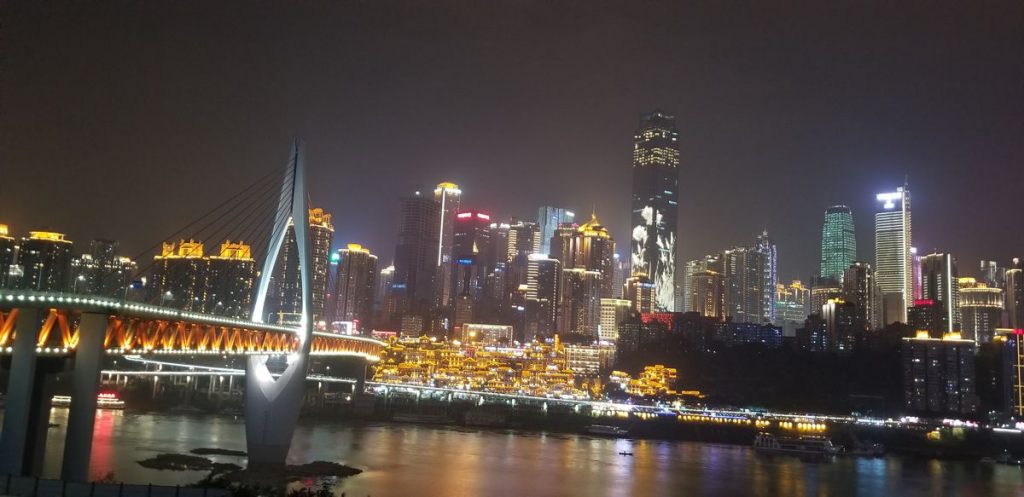
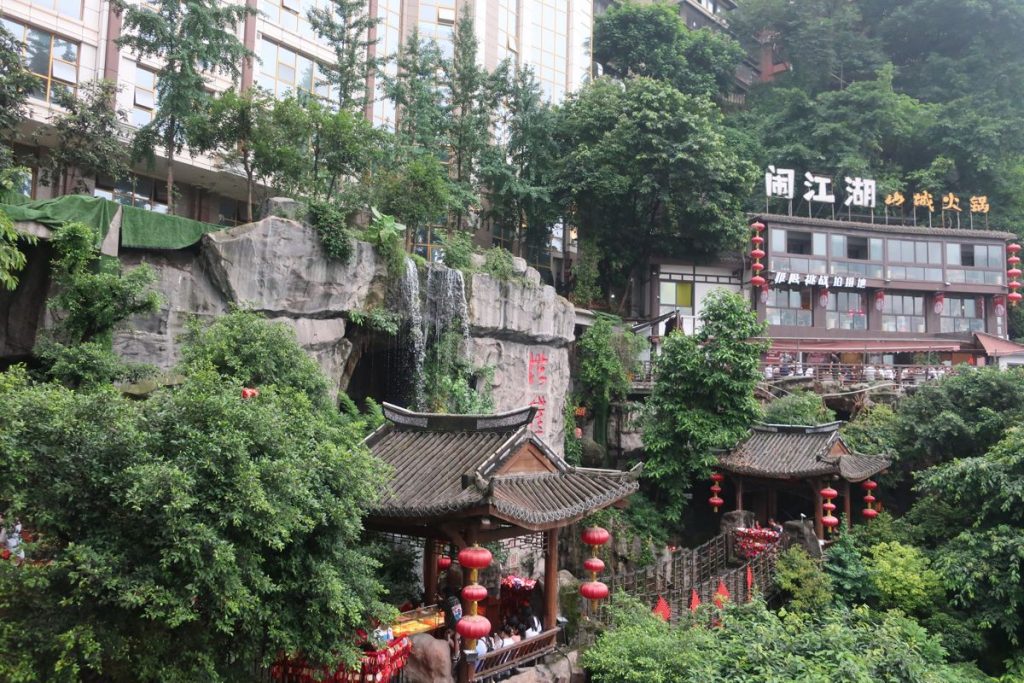
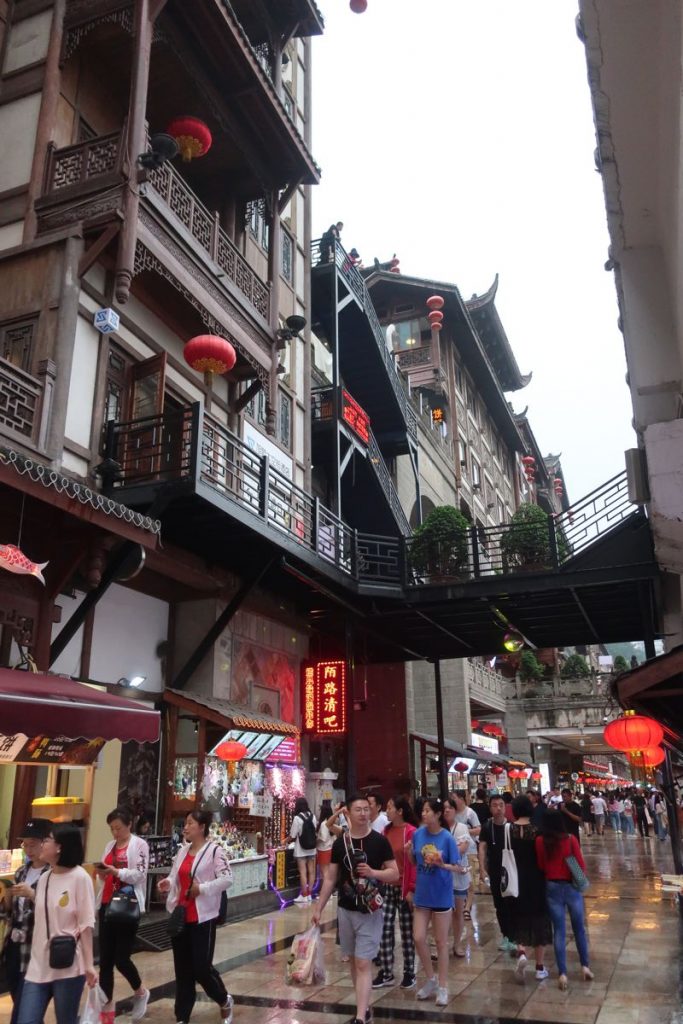
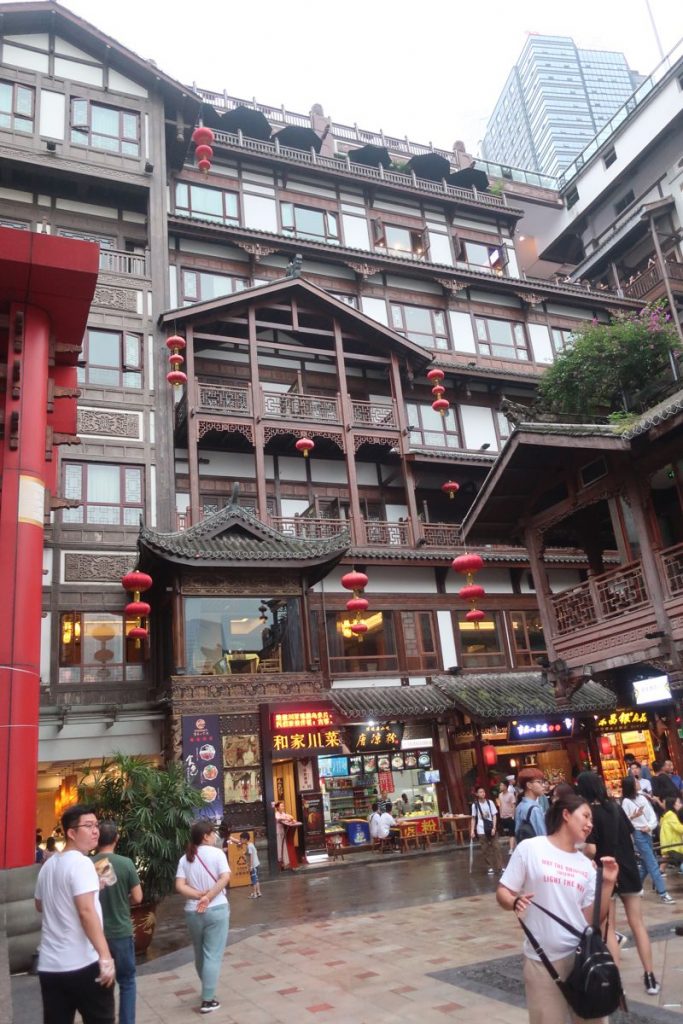
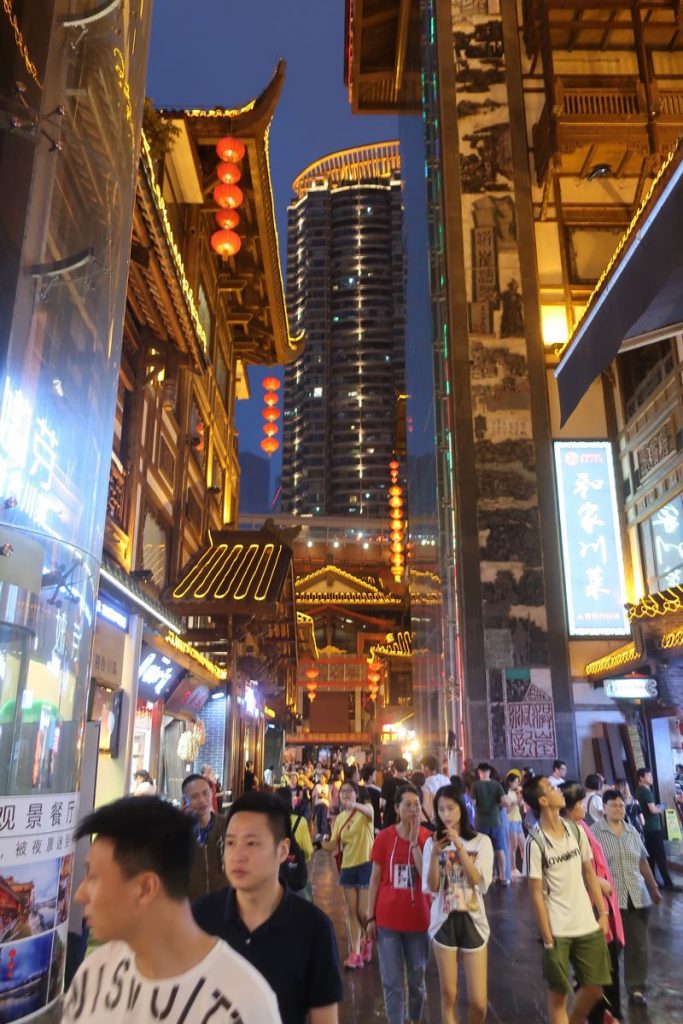
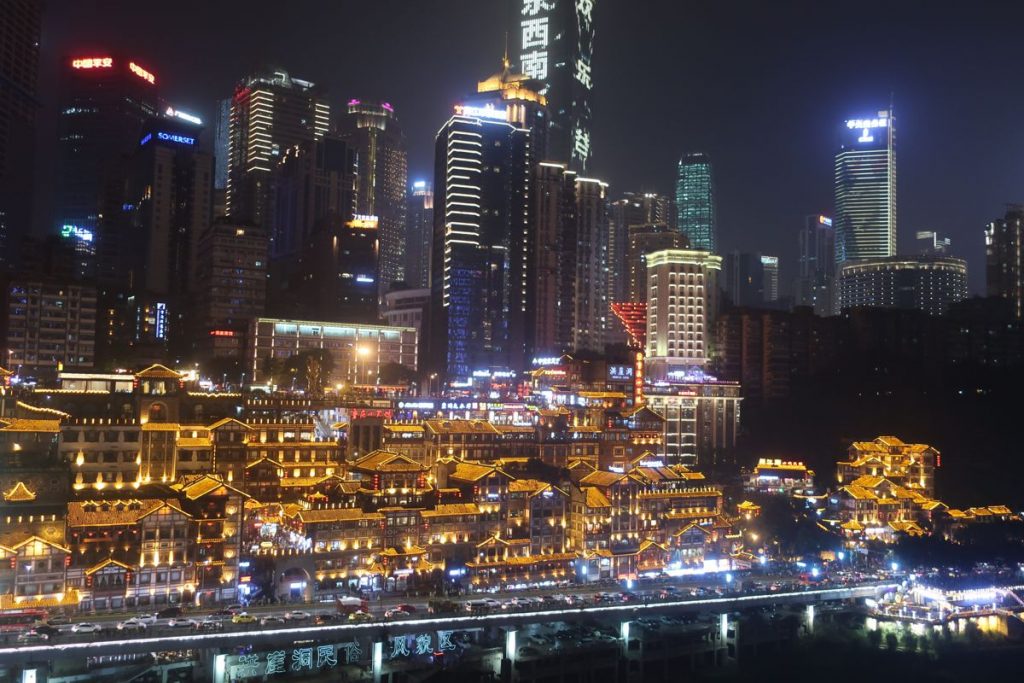
Yangtze River Cableway 長江索道
This cable car transports people across one of the major rivers in the city. It was the primary means of commute for many people before the bridges and subway came into existence. Nowadays it’s just a tourist attraction.
This cable car runs from XinHuaLu 新華路 at the city center eastward to ShangXinJie 上新街 in the residential neighborhoods. Tourist would naturally start from the city side where their hotels and other attractions are, perhaps buying a round-trip ticket to head back right afterward. We did some research beforehand and took the subway to the residential end first thing in the morning, and traveled one-way back toward the city. This allowed us to get on the ride without being stuck in line with 95% of the tourists. Indeed, we had a minimal wait with just one or two cars worth of passengers ahead of us. At the end of our journey, though, a queue of probably 1,000 people waiting to go the opposite direction poured out of the station into the streets.
A side benefit to ride the cable car this way was for us to see a part of “real” Chongqing, where locals went about their morning business.
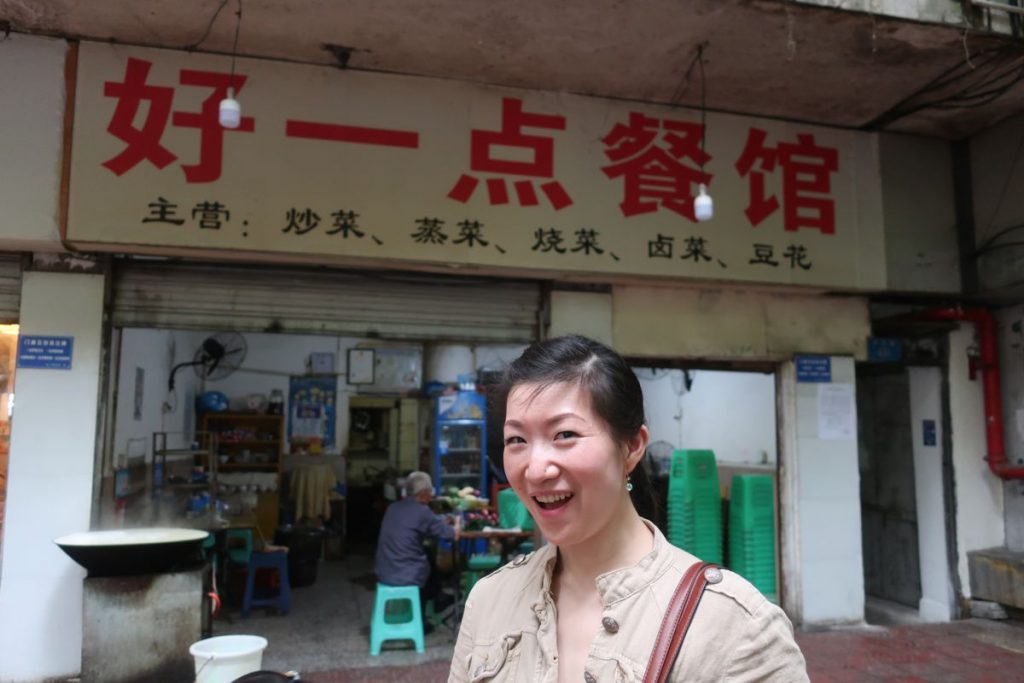
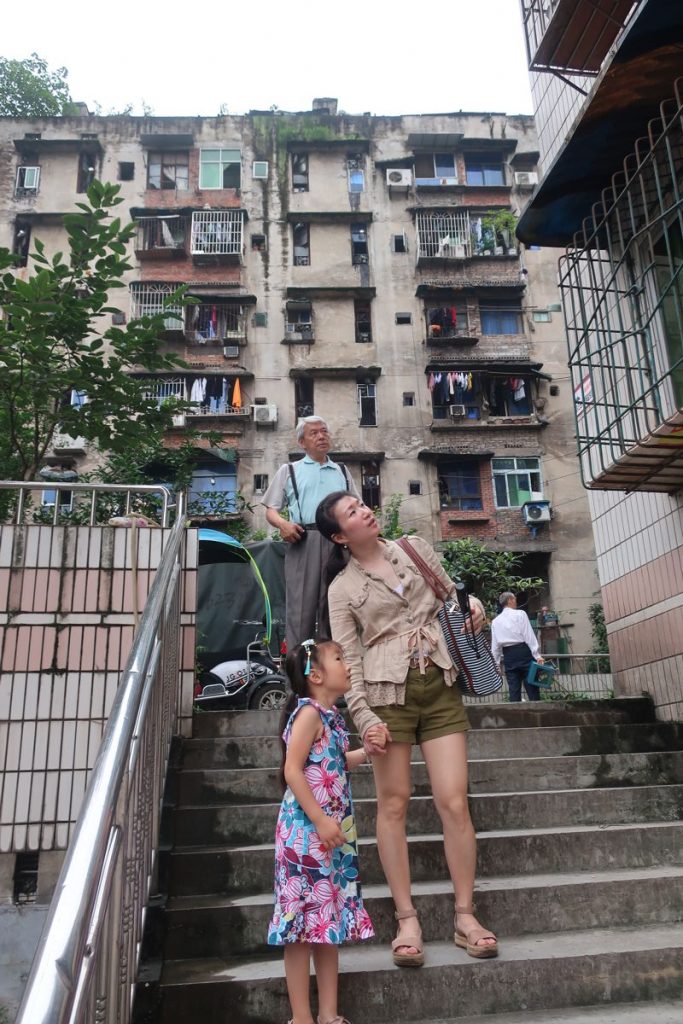
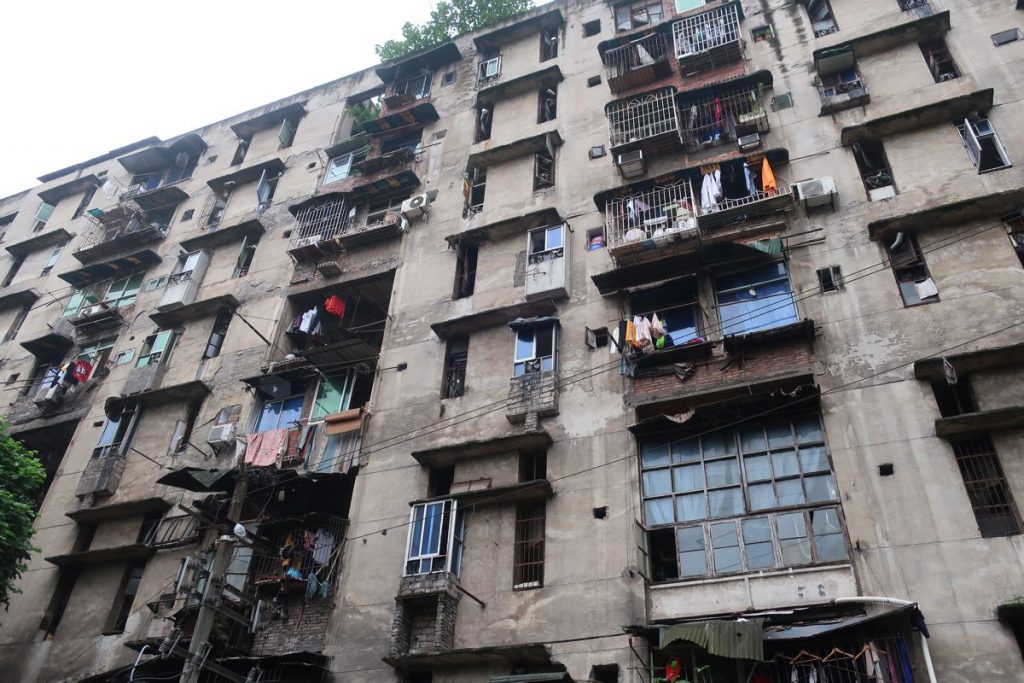
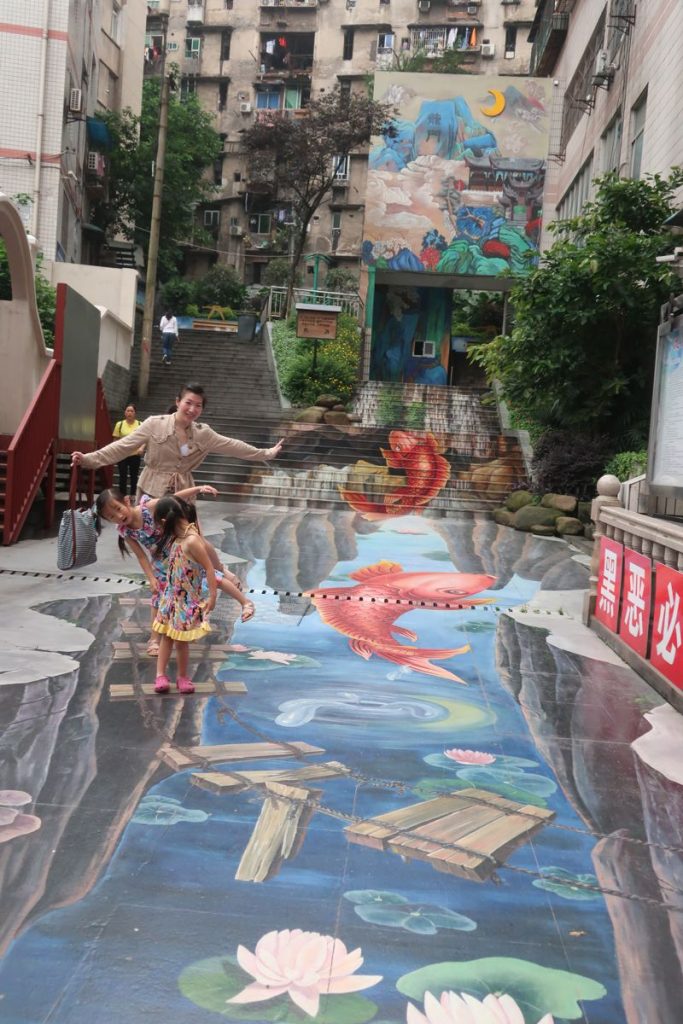
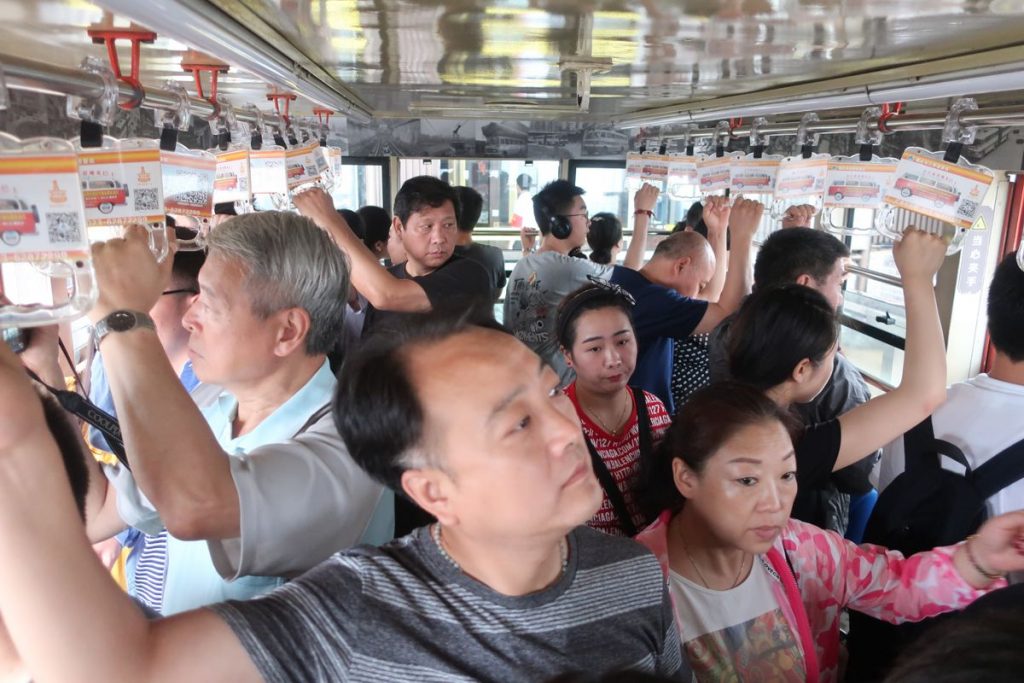
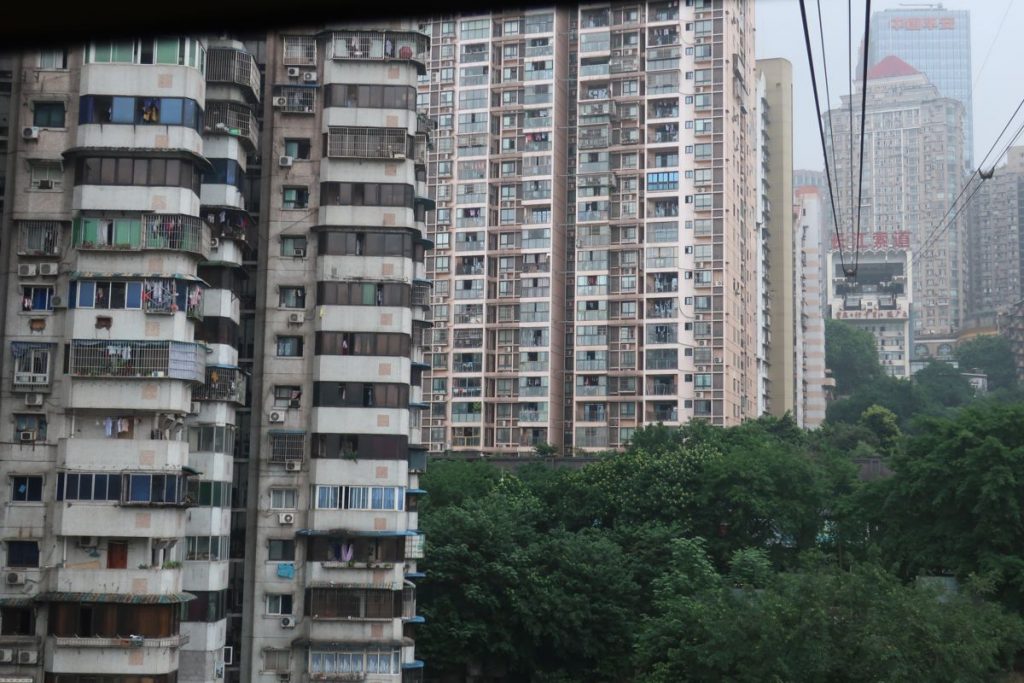
Ci Qi Kou 磁器口
Ci Qi Kou is a commercialized old town west of Chongqing, about 30 minutes by subway from the city center. It’s basically Jin Li with more stairs, or Hong Ya Dong with less stairs. The massive tourist crowd and rain drops on the stone steps were not a great combo, so we turned back without exploring the whole length of it.
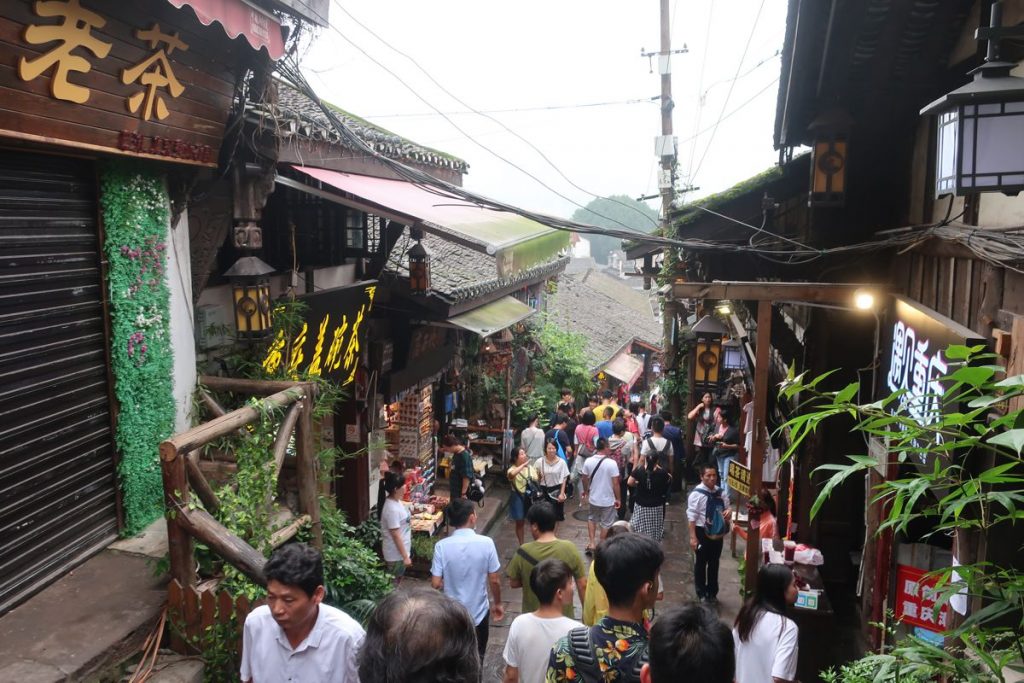
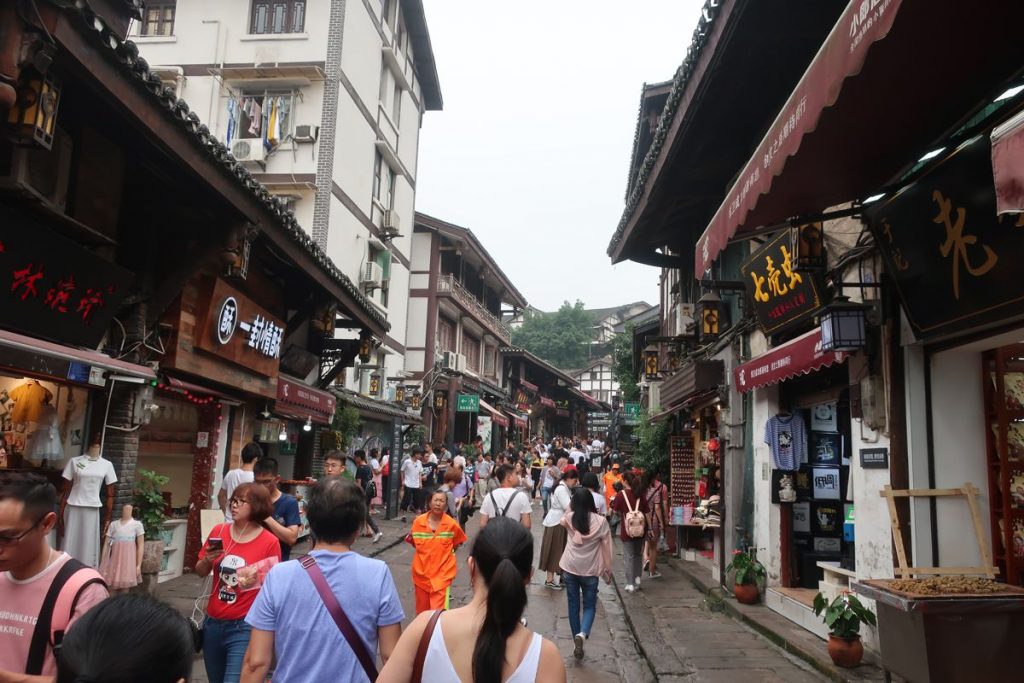
The Huang Guan Escalators 皇冠大扶梯
We love Chongqing because some of its top attractions are integral parts of the city as opposed to artificial creations that cater to tourists. Alongside the cable car, this 367-foot escalator was built to help locals get around the challenging terrains. You need to pay a nominal fee to use this escalator in either direction, which reminds me of some elevators in Genova.
This massive escalator bridges the Chongqing Railway Station on the lower end to the Liang Lu Kou subway station on the upper end. It’s easy to imagine its importance to the city’s public transit. For tourists like us, however, riding the elevator was just about riding it for the experience. We found a random restaurant for lunch at the lower end and headed back up.
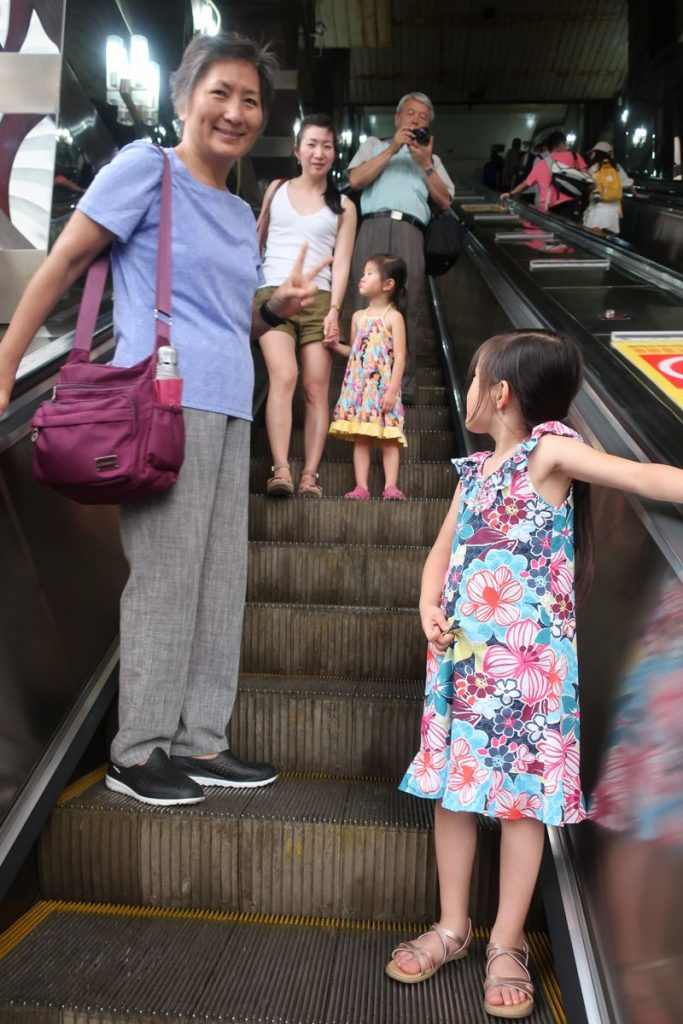
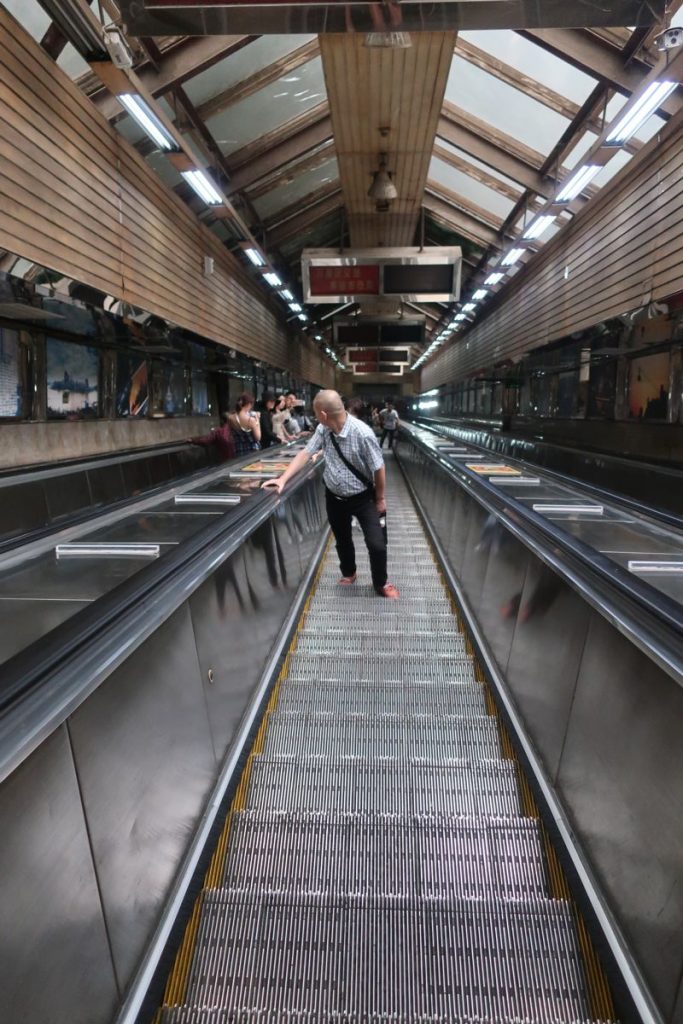
Other Notable Places
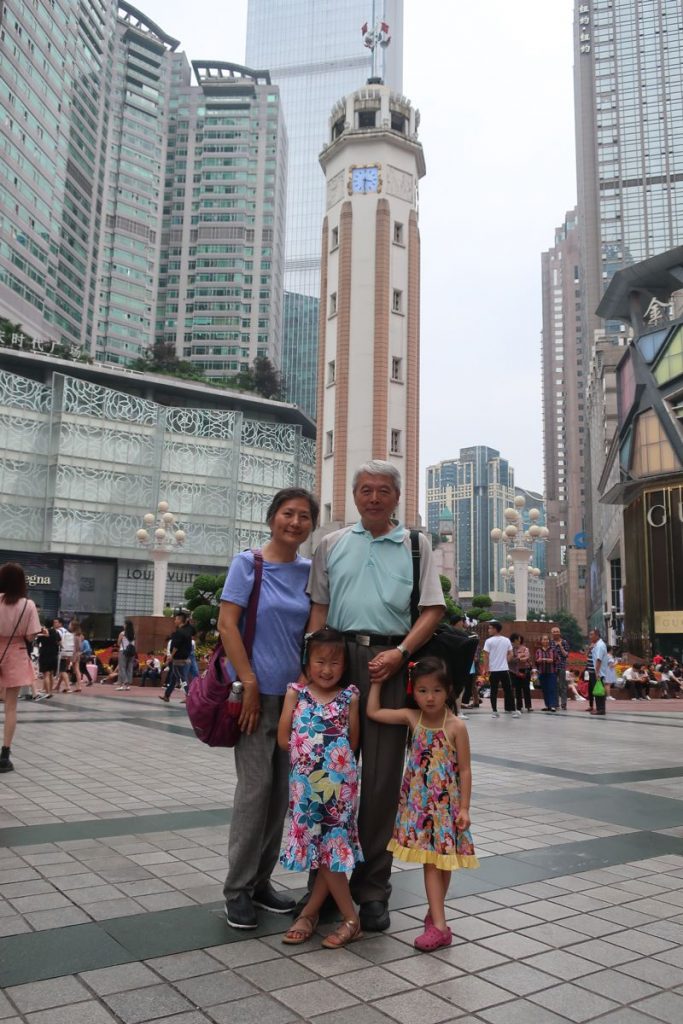
Jie Fang Bei is literally a communist monument, and there’s some irony in it being surrounded by Louis Vuitton, KFC, and a shopping mall named Times Square
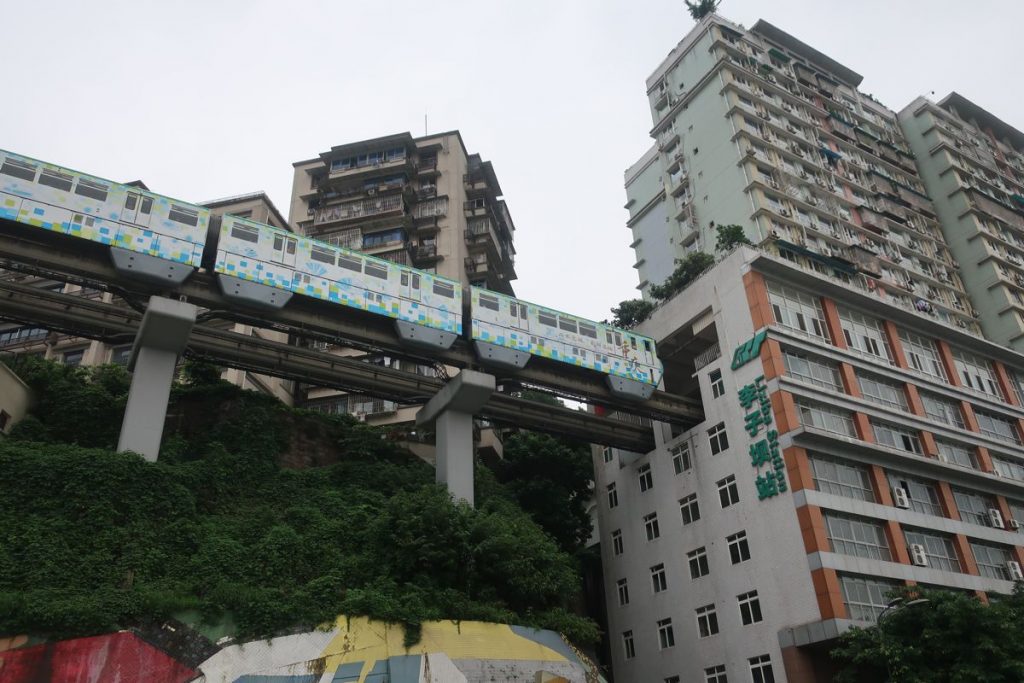
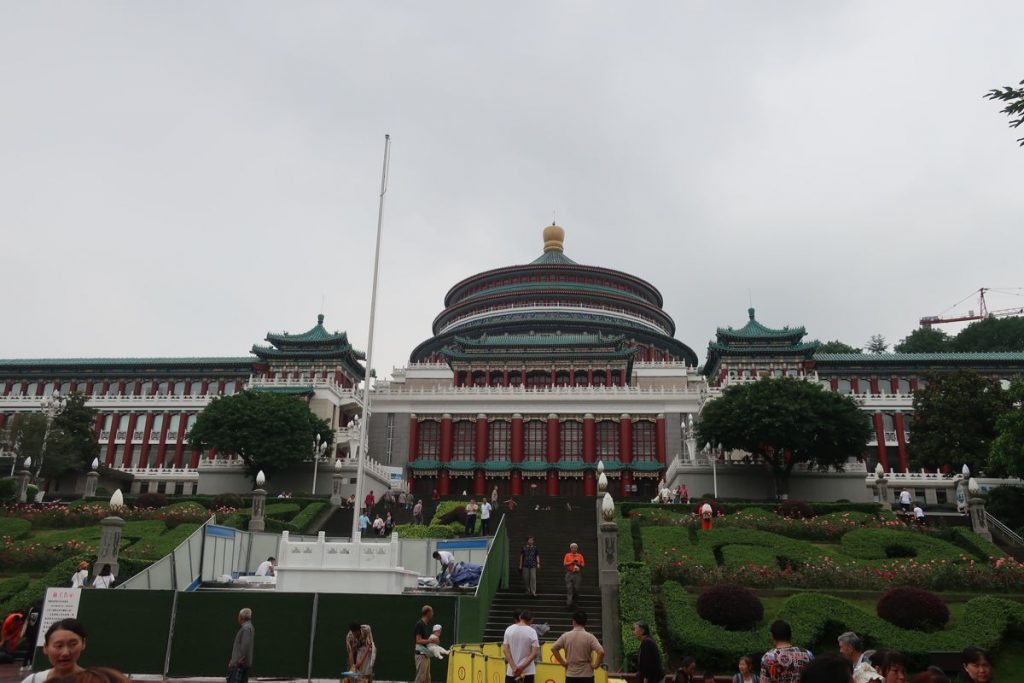
China 2019 index:
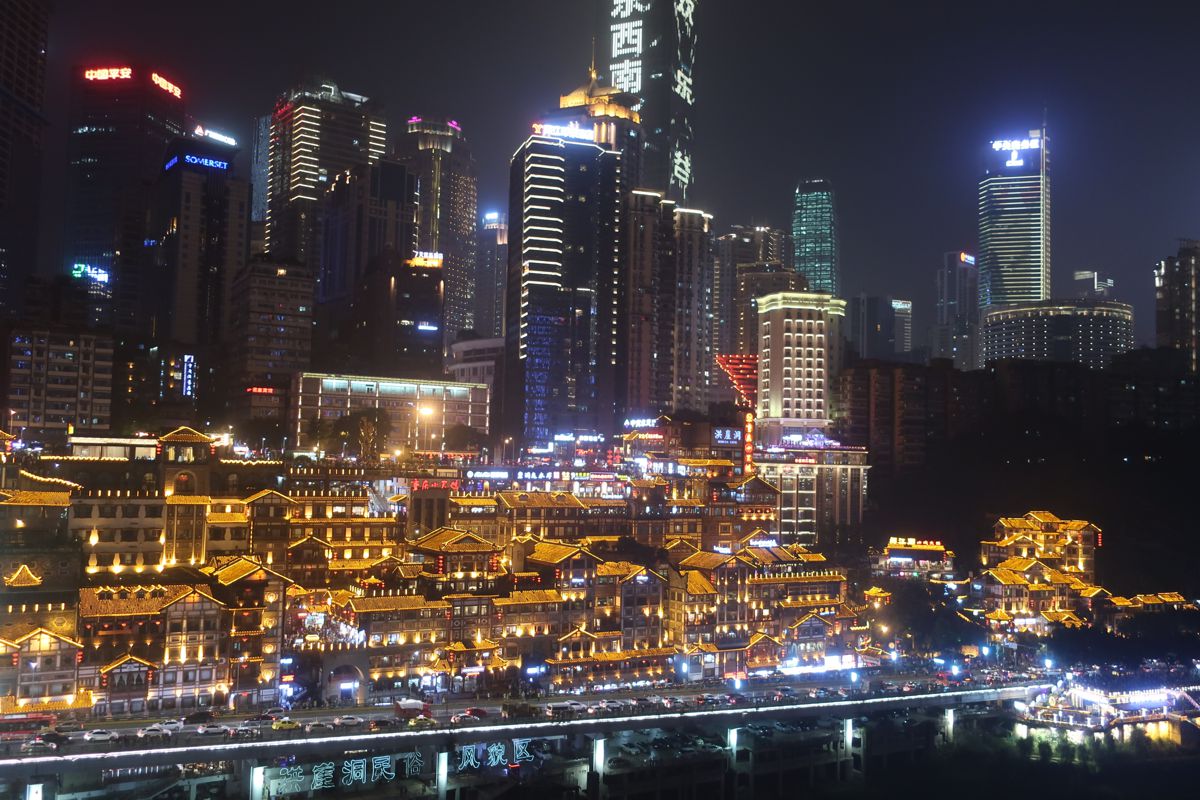
No Comments